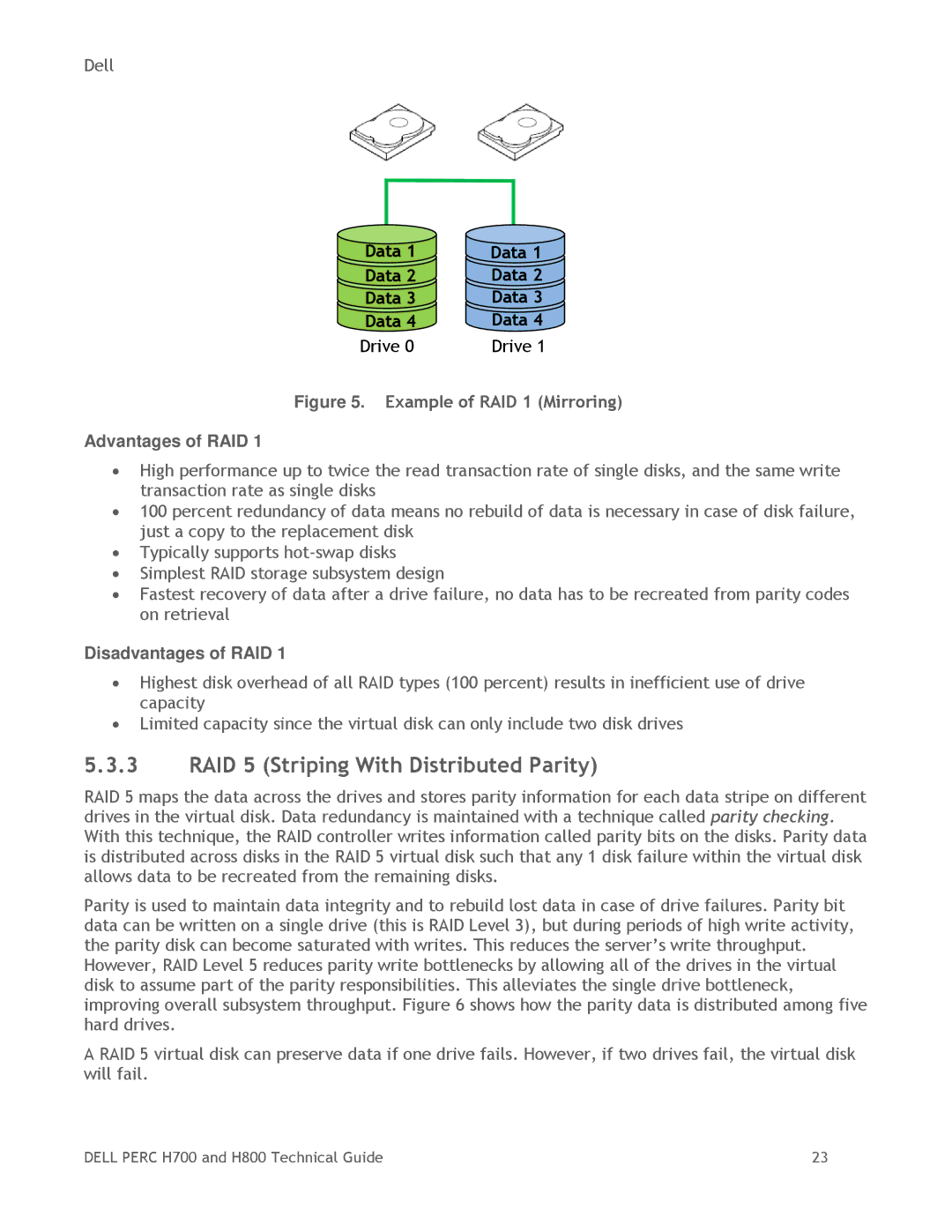
Dell
Data 1 | Data 1 |
Data 2 | Data 2 |
= | Data 3 |
Data 3 | |
Data 4 | Data 4 |
Drive 0 | Drive 1 |
Figure 5. Example of RAID 1 (Mirroring)
Advantages of RAID 1
∙High performance up to twice the read transaction rate of single disks, and the same write transaction rate as single disks
∙100 percent redundancy of data means no rebuild of data is necessary in case of disk failure, just a copy to the replacement disk
∙Typically supports
∙Simplest RAID storage subsystem design
∙Fastest recovery of data after a drive failure, no data has to be recreated from parity codes on retrieval
Disadvantages of RAID 1
∙Highest disk overhead of all RAID types (100 percent) results in inefficient use of drive capacity
∙Limited capacity since the virtual disk can only include two disk drives
5.3.3RAID 5 (Striping With Distributed Parity)
RAID 5 maps the data across the drives and stores parity information for each data stripe on different drives in the virtual disk. Data redundancy is maintained with a technique called parity checking. With this technique, the RAID controller writes information called parity bits on the disks. Parity data is distributed across disks in the RAID 5 virtual disk such that any 1 disk failure within the virtual disk allows data to be recreated from the remaining disks.
Parity is used to maintain data integrity and to rebuild lost data in case of drive failures. Parity bit data can be written on a single drive (this is RAID Level 3), but during periods of high write activity, the parity disk can become saturated with writes. This reduces the server’s write throughput. However, RAID Level 5 reduces parity write bottlenecks by allowing all of the drives in the virtual disk to assume part of the parity responsibilities. This alleviates the single drive bottleneck, improving overall subsystem throughput. Figure 6 shows how the parity data is distributed among five hard drives.
A RAID 5 virtual disk can preserve data if one drive fails. However, if two drives fail, the virtual disk will fail.
DELL PERC H700 and H800 Technical Guide | 23 |
